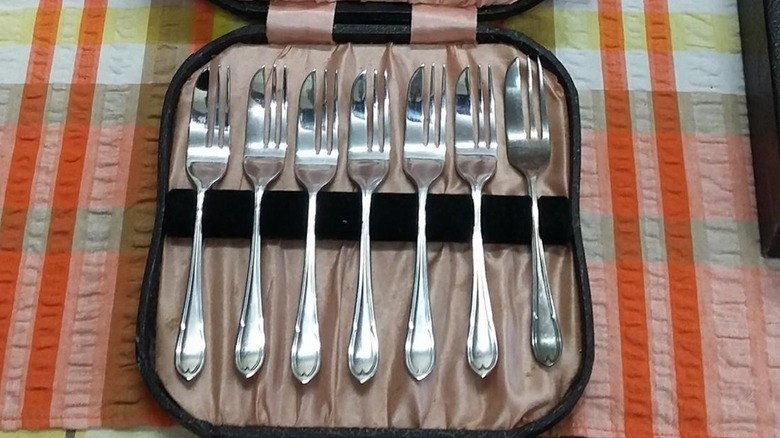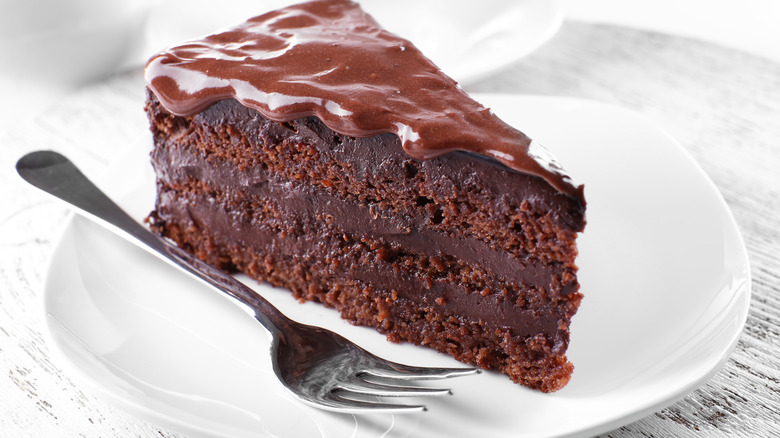The Real Reason Your Cake Fork Has A Notched Prong
Forks can be confusing, and we aren't talking about the type that Robert Frost details in his poem "The Road Not Taken." No, we're talking about the forks that flank your plate at the dinner table. According to Food and Wine, there are more than 35 different types of this utensil. But, we also know how important they are because we love using them to shovel pastas, salads, pies, and delicious cakes into our mouths! While most of us are familiar with the standard salad and dinner forks, after that, it might get a little murky. Don't worry, you aren't alone.
According to Brown University, these pronged utensils were first used by the Greeks to hold meat while cutting. Eventually, forks were widely used in Europe among the wealthy, before the utensil caught on in America in the mid-1700s. However, once they did catch on, there was no looking back.
There's a fork for just about anything and they even have their own terminology. Per Homenish, a fork has seven different parts. Who knew? The home resource site goes on to share, from bottom to top, a fork can be broken down into the handle, the neck, the back, the root, the tine, the point, and the slot. Different forks are designed for different uses, but the one fork we think needs a little more attention is the dessert or cake fork and its notched prong.
The cake fork's notch helps cut
When it comes to dessert, we admit, most of us aren't too picky about which utensil we use. But if you have dessert forks, often called pastry or pie forks, per Wine Enthusiast, then you might wonder why one of the tines is bigger and has a notch, or chip, in it. Taste of Home explains it has a real use. That notch is actually there to help cut through your apple pie or puff pastry sans knife. Wine Enthusiast notes it was designed this way for another practical reason. If you are standing and eating, you can hold your dessert plate in your left hand and easily slice through your dessert using that left prong of your dessert fork. Mind blown!
According to the United Kingdom's V&A Museum, the pastry fork was created during the Victorian era by Francis Higgins. Using your hands or even a spoon to eat dainty desserts at dinner parties during this era was considered gauche. The creation of the cake fork allowed dessert lovers to elegantly eat their favorite sweets without being labeled a barbarian.
Today, we are a little looser when it comes to desserts and using our hands — hello, cupcakes — but if you happen to come across a cake fork, now you know.

